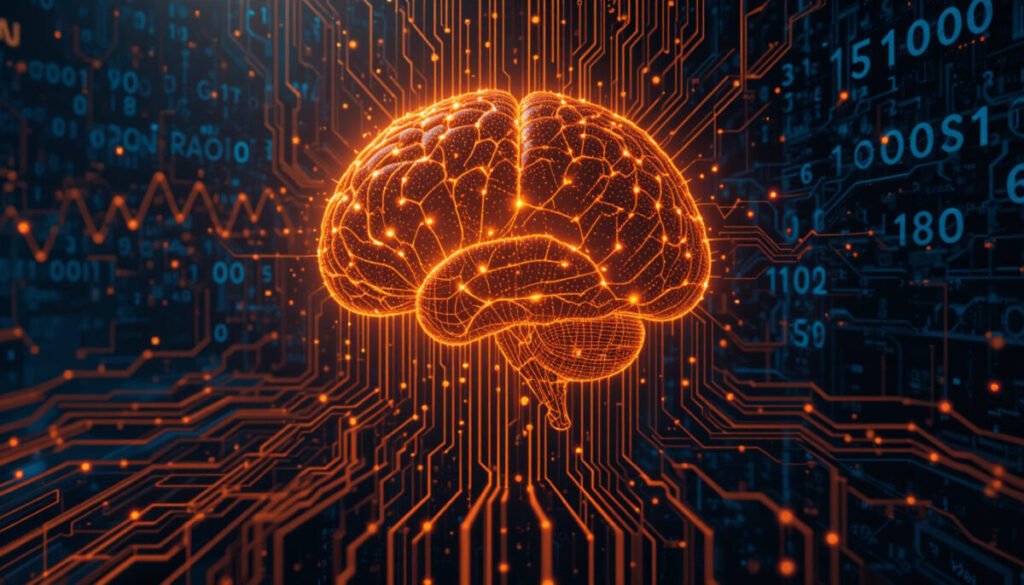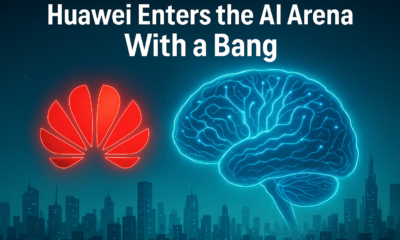AI Insights
The artificial intelligence revolution is approaching, and experts warn of changes that could transform the world

Humanity faces the possibility of reaching technological singularity in less than a decade, according to estimates by technologists and specialists. This concept, which for years remained linked to science fiction, describes the moment when artificial intelligence (AI) surpasses human capabilities and revolutionizes society. Recent advances in systems like ChatGPT and in areas such as machine translation have accelerated this process, sparking both excitement and concern for the immediate future.
The fundamental question no longer lies in the possibility of singularity, but rather in the timing and manner in which it will change daily life, employment, and the international economy.
The Meaning and Impact of Technological Singularity
The term “singularity” was coined in 1993 by Vernor Vinge, a computer scientist and writer, to denote the point at which technological development becomes uncontrollable and creates an environment beyond human understanding. The singularity implies that AI surpasses human intelligence, which would trigger social and economic transformations of unforeseeable proportions.
The importance of this concept stems from its ability to reconfigure every aspect of contemporary life. Advanced medical solutions, transformations in work and creativity, and ethical and existential challenges are just some of the possible consequences. Forbes highlights that the singularity represents, for some experts, an opportunity to solve major human problems, while others warn of the risks of unexpected consequences and advocate the urgency of a profound debate on its regulation.
AI Advances and the Time to Edit Metric
One of the most concrete indicators of progress toward the singularity comes from the Rome-based company Translated. According to Popular Mechanics, Translated developed a metric called Time to Edit (TTE), which measures how long it takes a professional human editor to review AI-generated translations compared to those produced by humans. This tool makes it possible to quantify the evolution of AI in complex language-related tasks.

Between 2014 and 2022, Translated analyzed more than two billion corrections from human editors. In 2015, editing a machine translation took about 3.5 seconds per word; today, that time has dropped to two seconds. If the trend continues, this AI could match human translators before the end of the decade.
Marco Trombetti, CEO, explained to Popular Mechanics: “The change is so small that you don’t notice it every day, but when you see the progress over ten years, it’s impressive.” This evolution, Trombetti emphasizes, constitutes the first concrete prediction about the pace at which humanity is approaching the singularity in the field of artificial intelligence.
Although achieving perfect machine translation is not the same as achieving artificial general intelligence (AGI), progress in natural language processing remains one of the greatest challenges for AI.
Optimism, Caution, and What-Ifs

The debate about the imminence and impact of the technological singularity brings together diverse opinions. Sam Altman, executive director of OpenAI, states: “We have already built systems that are smarter than humans in many ways and are capable of significantly amplifying the output of those who use them.” In his blog, Altman argues that tools like ChatGPT already outperform any human in specific tasks, and scientific and creative productivity has multiplied thanks to AI. His projections predict agents capable of performing real cognitive work in 2025, systems that will discover new knowledge in 2026, and robots that will perform physical tasks in 2027.
Futurist Ray Kurzweil, quoted by Forbes, places the arrival of the singularity in 2029, although he clarifies that it will not be an abrupt moment, but a gradual process. “We won’t know we’ve crossed the threshold until we’re already immersed in it,” Kurzweil states. On the other hand, Marc Andreessen, co-creator of the Mosaic browser, is confident that AI will help us tackle disease and scarcity and elevate human creativity to new levels.
There are also voices of caution. Forbes emphasizes that every major technological revolution has brought unexpected consequences and that the singularity could exacerbate social and ethical tensions if not handled responsibly. Altman himself acknowledges: “A small misalignment multiplied by hundreds of millions of people can have a large negative impact,” underscoring the urgency of addressing AI safety and alignment.
The Stages Toward Singularity: From Support to Total Transformation
The journey toward singularity doesn’t present itself as a sudden rupture. According to Forbes, several phases are already underway. The first corresponds to the “relinquishing agency,” which consists of ceding control to AI assistants integrated into daily life. Professionals across multiple sectors rely on these systems to compose messages, generate reports, and manage agendas. As these assistants become more advanced, their capabilities begin to match those of humans.
The next stage, called “Emergent Cognition” corresponds to the emergence of AI models capable of planning and pursuing their own goals. Here, AI not only responds, but also exhibits initiative, manages businesses, manages infrastructure, and creates literary works with little supervision. In parallel, human augmentation technologies—from real-time translation headsets to cognitive enhancement devices—drive hybrid intelligence.
The third phase, “Cognitive Escape Velocity,” marks the emergence of AGI, with models that surpass human cognition and rapidly redesign their architecture. Sectors such as education, research, and governance undergo profound transformations. Philosophical and ethical discussions about AI consciousness and rights gain prominence.

Finally, the “Threshold” indicates the moment when humanity ceases to be the most intelligent species on the planet. The work-based economy is transforming, governments are facing unprecedented challenges, and part of the population is choosing to merge with AI through implants or brain interfaces. Forbes highlights: “The rules of life are changing, and the old ones are fading from memory.”
Fundamental Impacts: Opportunities and Challenges
The technological singularity could create an unprecedented abundance of intelligence and energy, resources that have historically limited human development. Sam Altman of OpenAI asserts that the capacity for individual action will be much greater in 2030 than in 2020. AI has already multiplied the productivity of scientists and other professionals, and automation in robotics and data centers is expected to make access to artificial intelligence as cheap as electricity.
This accelerated progress entails considerable challenges. Forbes warns of the possible disappearance of traditional jobs, the reduction of attention and memory spans, and the transformation of social ties. Already in the last decade, the intensive use of mobile devices and social media has changed human relationships, increasing anxiety and isolation; this phenomenon foreshadows the potential effects of AI deeply embedded in everyday life.
On the economic front, the generation of value through AI has inaugurated a cycle of investment and infrastructure development that is changing entire industries. However, the equitable distribution of benefits and access to superintelligence remain key challenges. Altman emphasizes the priority of “making superintelligence cheap, widespread, and not concentrated in a few.”
Urgent Challenges: Alignment and Social Debate
The consensus among experts indicates that the singularity is not necessarily an inevitable destiny nor does it guarantee positive effects. Everything will depend on collective decisions about the management and distribution of artificial intelligence. Sam Altman insists that “it is essential to solve the challenge of alignment and ensure that AI systems learn and act in accordance with humanity’s long-term interests.”
Social media algorithms, which prioritize short-term attention at the expense of well-being, illustrate the dangers of misaligned AI.
Forbes proposes a regulatory framework that recognizes both the promises and risks of AI. Preparing for the singularity requires developing wisdom alongside intelligence and ensuring that the benefits reach all of society, not just an elite. The public debate about the limits, rights, and responsibilities of AI must involve governments, businesses, and citizens together.
The move toward the singularity is gradual, driven by continuous and often imperceptible developments that are already transforming daily life. Humanity must adapt, learn, and collectively choose how to navigate this new horizon, in which artificial intelligence will define the meaning of humanity.
Technological singularity may transform society sooner than expected; the superabundance of intelligence and energy will alter human progress, and the debate about alignment and access will be key going forward.
AI Insights
5 concerns raised during House hearing on health AI

The growing influence of artificial intelligence in health care was on display Wednesday as House lawmakers peppered invited witnesses with pointed questions about how technology might influence seemingly disparate topics like drug development, experimental Medicare models, and teen mental health.
The hearing description by the Energy and Commerce Committee’s health subcommittee promised a broad examination of the potential to advance American health care with AI, and members took the opportunity to dive into the topics closest to their interests. The questions over more than three hours revealed possible directions for policy as lawmakers consider whether — and how — to pass laws regulating AI’s use in health care.
Here are five concerns that came up.

This article is exclusive to STAT+ subscribers
Unlock this article — and get additional analysis of the technologies disrupting health care — by subscribing to STAT+.
Already have an account? Log in
AI Insights
HBCU rivals team up to launch $2.2M machine learning project

(PVAMU) – As Prairie View A&M University and Texas Southern University prepared to face off in theLabor Day Classic, the two rivals were also joining forces off the field. Together, they’re leading a $2.2 million research project that uses artificial intelligence to speed up the discovery of new materials — a breakthrough with the potential to transform manufacturing and defense technology.
The project, funded by the U.S. Department of Defense’s Air Force Office of Scientific Research, establishes the Center for Scientific Machine Learning for Material Sciences. Texas Southern is leading the grant, with Prairie View A&M receiving $600,000 to guide a major part of the work. They are joined by Texas A&M University and the University of Michigan.
At TSU, the project is led by Dr. Yunjiao Wang, principal investigator, and Dr. Daniel Vrinceanu, co-principal investigator. At PVAMU, the effort is headed by Dr. Noushin Ghaffari, principal investigator, and Dr. Lin Li, co-principal investigator. Together, these scientists are building advanced machine learning tools to predict, optimize, and simulate new materials with greater speed and accuracy.
So what does this research mean? Materials science is the study of how everyday materials, such as metals, ceramics, and polymers, can be designed or improved for use in products like airplanes, cars, medical devices, and electronics. Machine learning, a type of artificial intelligence, allows computers to recognize patterns in massive sets of data and make predictions. By combining the two, researchers can discover better, stronger, and lighter materials faster than ever before.
At the center of this work is the electron beam powder bed fusion (E-Beam) platform at Texas A&M University, a state-of-the-art 3D printing technology for metals managed in Dr. Mohsen Taheri’s lab. By pairing this equipment with data from sensors and advanced computer models, including deep neural networks, the team aims to predict how materials will behave and perform long before they’re ever produced.
Beyond advancing science, the project is designed to open doors for students. Both Prairie View A&M and Texas Southern will provide hands-on research experiences, summer workshops, and mentorship to prepare the next generation of engineers and data scientists. These opportunities are especially critical for Historically Black Colleges and Universities (HBCUs) and Minority-Serving Institutions (MSIs), where representation in high-tech research fields is growing but still limited.
So, while PVAMU and TSU may battle it out on the gridiron, they’re proving that when it comes to innovation and education, they’re playing on the same team.
AI Insights
North Carolina joins growing number of states establishing AI frameworks

North Carolina Gov. Josh Stein on Tuesday signed an executive order launching a statewide artificial intelligence framework. The order creates an AI leadership council, an AI accelerator at the Department of Information Technology, and oversight teams in each state agency.
The council, which includes government officials like state Chief Information Officer Teena Piccione, will act as an advisory board to the governor and state agencies on the use of AI in government, develop training programs and promoting AI literacy and fraud prevention for the public.
In a press release, Stein said the move is aimed at boosting economic growth and efficiency while ensuring responsible adoption. She pointed to major investments, like Amazon’s planned $10 billion AI innovation campus in Richmond County, as evidence of the state’s growing role in the tech economy.
“AI has the potential to transform how we work and live, carrying with it both extraordinary opportunities and real risks,” Stein said in the release. “Our state will be stronger if we are equipped to take on these challenges responsibly. I am looking forward to this council helping our state effectively deploy AI to enhance government operations, drive economic growth, and improves North Carolinians’ lives.”
With this move, North Carolina’s joins dozens of other states working to establish their own AI rules and strategies in recent years. Rhode Island, Virginia and Washington last year created task forces to explore ways AI can make state government more efficient.
The Colorado legislature, meanwhile, recently voted to delay implementing the state’s AI Act until the end of June next year, five months after the law was originally to go into effect.
In April, California Gov. Gavin Newsom announced a new initiative that integrates generative AI technologies across state government, including aiding the Department of Transportation’s efforts to reduce traffic congestion and helping the Department of Tax and Fee Administration streamline its customer service systems.
Mississippi Gov. Tate Reeves ordered agencies in January to appoint AI coordinators and develop policies stressing fairness, transparency and accountability.
Ohio has turned to AI for education, requiring all public schools to adopt AI policies by 2026, with model guidelines due at the end of this year.
-

 Business5 days ago
Business5 days agoThe Guardian view on Trump and the Fed: independence is no substitute for accountability | Editorial
-
Tools & Platforms3 weeks ago
Building Trust in Military AI Starts with Opening the Black Box – War on the Rocks
-

 Ethics & Policy1 month ago
Ethics & Policy1 month agoSDAIA Supports Saudi Arabia’s Leadership in Shaping Global AI Ethics, Policy, and Research – وكالة الأنباء السعودية
-

 Events & Conferences4 months ago
Events & Conferences4 months agoJourney to 1000 models: Scaling Instagram’s recommendation system
-

 Jobs & Careers2 months ago
Jobs & Careers2 months agoMumbai-based Perplexity Alternative Has 60k+ Users Without Funding
-

 Education2 months ago
Education2 months agoVEX Robotics launches AI-powered classroom robotics system
-

 Funding & Business2 months ago
Funding & Business2 months agoKayak and Expedia race to build AI travel agents that turn social posts into itineraries
-

 Podcasts & Talks2 months ago
Podcasts & Talks2 months agoHappy 4th of July! 🎆 Made with Veo 3 in Gemini
-

 Podcasts & Talks2 months ago
Podcasts & Talks2 months agoOpenAI 🤝 @teamganassi
-

 Education2 months ago
Education2 months agoAERDF highlights the latest PreK-12 discoveries and inventions



















